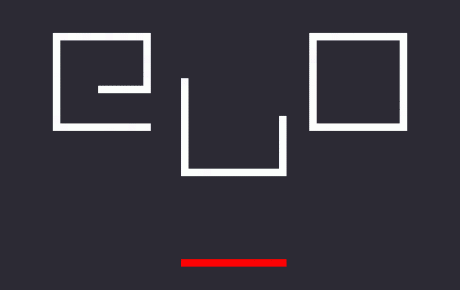“The Descendants” by Alexandre Gherban is a dynamic and “active” program with an indeterminate function. It varies in transiency, sometimes being transient and other times intransient; In other words, the aspects of the program (the text, the images, and the sounds) change and move constantly in a random, or indeterminate, function. Even if the text does not have a personal perspective, the viewer plays a role by choosing his/her path in the work. The reader can interact with the processes and find the links within the images. Only then do words reveal themselves. By clicking on the words, (“the descendants”, “the parents”, “who…”, “and who…”) the work changes and the viewer can interact with the images of the new page. For the page where one sees “the parents”, one must choose one of the two images that represent the parents themselves, and this choice determines the path for what follows. This function suggests a reference to artificial life. By starting with “the parents” that produce “the descendants”, the viewer sees a type of reproduction that resembles that of a family tree. By choosing the path of one parent or the other, the user has an exploratory function. With each new page that follows, the viewer can play with the images and the symbols, and then find a link to continue on to the following page. Because of this, one could say that the text offers an explicit chaining, or linkage. These images are made of letters, geometric figures, and small photographs, all representing the “descendants” and what they do. Even if the images are designed with a random function, they move in repetitive ways with each new page. At the same time, one can always see the calculated randomness that presents itself in real time (where the objects move at the moment when the viewer sees them or the mouse touches them), all of which determines the atmosphere of the program. Like the article “3eme brouillon pour un manifeste de l’œuvre d’art sur ordinateur “ by Antoine Schmitt suggests, “Put there is a direct relationship between the processes and the spectator, through the effects and their perception, the actions and the reactions.” This program is similar to the third program of “Trois Machines de poésie” by Gherban presented at the international festival "e_poetry Paris 2007". One sees “the parents” and then “their descendants”. It is interesting that the descendants of this program are introduced with a possessive adjective, "their", rather than an indefinite article like “the descendants”. In general, the relationship between the parents and the descendants is evident because “descendants” must have parents from which they came, but perhaps this relationship does not have the same meaning in these two programs. One can, perhaps, conclude that “Les Descendants” is an extension, or rather a continuation, of the third program of “Trois machines de poésie”.
Les Descendants
Source Database:
ELMCIP
Source Entry URL:
Source Entry OAI-PMH Identifier:
oai:elmcip.net:9693
Source Entry Language(s):
English
Description(s):







